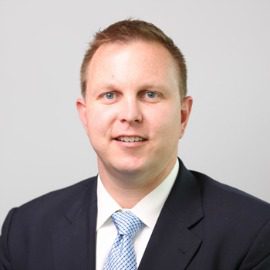
A former Navy cryptographer, Matt Jones understands how important it is not just to collect sensor data at the edge, but to get it back to commanders in a timely way. That’s where Sigma Defense Systems comes into the picture.
“We are kind of like the [Defense Department’s] data logistics partner,” he said. “We take data coming off the sensor and deliver it to the doorsteps of our customers.”
Jones joined Sigma Defense in January as president, with an eye toward strengthening the company’s position in the crucial but often overlooked network infrastructure space.
“How we move data in permissive and nonpermissive environments, that isn’t something there is a lot of focus on,” he said. “But it’s also a big challenge for the government. I had already done a lot of work on sensors and data analytics, so I saw this as a place where I felt like I could make a difference.”
Founded in 2006 and backed by Sagewind Capital, Sigma works to meet that challenge with systems engineering and support services to help ensure networks can meet the present-day needs for data transmission. This comes at a time when data is increasingly crucial to the military mission.
“Our tradecraft is all about low latency and the routing of data,” Jones said. “It’s one thing to move the data. It’s another thing to do it at decision speed. That’s our secret sauce — to get that data back to where it needs to go at the speed of strike.”
It takes a sophisticated level of engineering know-how to meet that bar. Jones likens it to the way FedEx moves packages with great efficiency.
“If there’s a huge storm, FedEx knows about it and is able to reroute around it,” he said. “Transport depends on knowing where the data is in motion, knowing that if an op center is down, you’re not going to send it to that location. You have self-healing networks that route the data around potential bottlenecks or outages, to continue to deliver at speed.”
To make these kinds of solutions readily available to defense customers, Sigma Defense has developed a standardized methodology. By using a series of predefined playbooks, the company can bring repeatable solutions to common problems quickly and cost effectively.
“These playbooks make us agnostic is terms of what is the data type and what is the sensor,” Jones said. “We are not tied to particular sensors and stovepipes: We understand all the data networks, all the data sources. We are 100% focused on agnostic data transport across full-spectrum ISR.”
While there are other GovCons that may wrap up networking infrastructure along with their other offerings, Jones said Sigma can gain a competitive advantage by having a laser focus on just the data transport space. Given the critical nature of data in driving military decision-making, he said, it’s an area that merits the attention of experts.
“If the data doesn’t move from the sensor to the sense-maker, you may be making decisions based on incomplete information,” he said.
From a business perspective, the challenge for Sigma lies in drawing the attention of military leadership to this critical capability.
“It’s really about changing hearts and minds, getting people to sit down and say: ‘You know what? The network is really important!’” Jones said.
To make his case, Jones looks to build support from the operational side, the folks deploying the sensors and who understand the vital role that data transport plays.
“We do a lot of education — explaining why this matters,” he said. “What’s the difference between receiving a full-motion video stream in 10 minutes versus 10 seconds? What does that enable?”
He can point to examples like the Marine Corps’ recent adoption of Sigma technologies on a demonstration project. The system was able to deliver full-motion video with extremely low latency, making key data more readily available to decision-makers.
Building on successes like that, Jones is looking to implement a growth strategy that relies on a combination of strategic investments and potential acquisitions. He said the company is seeking to invest in emerging satellite capabilities, to bolster its transport mechanisms. Sigma also plans to acquire firms that offer complementary technologies in support of more robust networking solutions.
On a personal level, Jones said he finds special meaning in supporting the armed forces.
“My nearly 8 years in the Navy, it totally changed the trajectory of my life,” he said. “The military for me was about providing the discipline and the organization, and really driving home a sense of commitment.”
Military service “made me who I am today,” Jones said. “Now, I spend every day working with or around the military, and at Sigma, we’re probably 95% veterans, so this becomes just a way for me to continue with my service to the country.”

